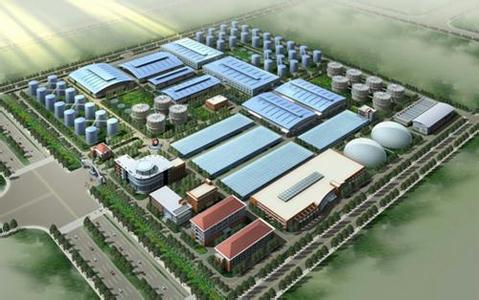Whaylan 600W portale power stations have Large capacity, high endurance, a variety of ports, at any time for your need to charge the equipment. Completely say goodbye to the anxiety of outdoor electricity and devote yourself to an outdoor activity. At the same time, it can be equipped with solar panels to charge the power supply. The energy storage technology of lithium battery is combined with the clean renewable energy of solar energy to truly realize the enjoyment from day to night.
600W power station,solar station,bluetti 600w,lithium generator suzhou whaylan new energy technology co., ltd , https://www.whaylan.com Never stop exploring
Never stop exploring
For distributed generation, although China lacks a mature business model system, the pace of exploration has never stopped. The Golden Sun subsidy, which is no longer implemented, is a trial and error journey and proves that subsidies from the equipment side are flawed. China then turned to learning the experience of subsidies in Europe and the United States, subsidizing power generation, and eliminating the possibility of fraudulent subsidies for equipment without generating electricity. To a certain extent, this is a progress made by China in exploring the business model of distributed power subsidy, and it is at least clear that the innovation of the business model from terminal electricity prices is feasible.
In view of the subsidized business model of distributed generation, although clear detailed provisions have not been introduced, after extensive consultations in the first half of the year, the National Energy Administration issued the "Notice on Launching a Demonstration Area for Distributed Photovoltaic Power Generation Applications" in the second half of the year. Xinneng [2013] No. 296) approved the construction of the first batch of distributed photovoltaic power generation application demonstration zones in 18 project industrial parks and enjoy a subsidy of 0.42 yuan/kWh. Compared with the RMB 0.35/degree subsidy proposed in the draft of the “Consummation of Photovoltaic Power Pricing Policy†announced by the Development and Reform Commission's Price Division in March this year, it has been adjusted upwards.
The 0.42 yuan/degree subsidy standard has accelerated the return on investment of these newly approved projects. Zhongguancun Haidian Park, Haidian District, Beijing Within the demonstration zones, a photovoltaic engineer integrated Beijing’s industrial electricity consumption and average daily sunshine and electricity generation. Under the incentive of 0.42 yuan/kWh, the investment of the project will only be returned to the current period. It takes 3 years. This undoubtedly greatly encouraged the construction of distributed photovoltaic power generation demonstration areas in China.
However, the enjoyment of the 0.42 yuan/kWh tariff subsidy model is only a matter of one discussion and is only applicable to the 18 project industrial parks currently approved. It has not yet been widely promoted in China as a fixed subsidy tariff. This is because, in China, the electricity price for industrial and commercial use is about 0.8 to 1.4 yuan/kWh, and the electricity price for ordinary residents is 0.3 to 0.5 yuan/kWh, which brings about the imbalance in the income of current fixed-rate electricity subsidies. . The electricity price is high. After obtaining the actual fixed-rate electricity subsidy, the greater the return, while the average resident electricity price is lower, the longer the income period. As a result, the problem of unfair returns has made the choice of users and buildings for investors in photovoltaic distributed generation projects complicated. According to Wang Sicheng, a researcher at the New Energy Research Institute of the National Development and Reform Commission, according to the photovoltaic power generation cost of 1.2 yuan/kWh, only industrial power with a power price higher than 0.8 yuan can make a profit.
It is precisely because of the unbalanced nature of electricity prices in China's electricity consumers that China has been unable to find a balance point in the amount of subsidy and settlement methods for “spontaneous self-use and surplus electricity uploadâ€. The fixed tariff standard is transparent and simple to operate. It will not be affected by differences in the electricity prices of different users and peak-to-valley tariffs, but the benefits will be directly affected by the electricity prices of users.
This is why the current Energy Bureau only encourages the construction of distributed photovoltaic power generation demonstration zones in industrial parks. On the one hand, because the electricity price of industrial electricity is relatively high, on the other hand, because of the large load of industrial electricity, it is easy to absorb photovoltaic power generation on the spot, which is in line with the self-use mode encouraged by the state. However, China's distributed generation can only start from demonstration applications in industrial parks, and explore reasonable business models step by step. For the distributed generation business model applicable to residents, it is necessary to learn from the experience and actual results accumulated in the previous demonstration project for further research and discussion.
Europe and the United States learn from experience
A European photovoltaic EPC engineer did not understand why China's distributed photovoltaic power generation was so troublesome. Even China's current situation made him see some dazzling.
In the world, distributed photovoltaic power generation currently has three business models. According to system access methods, it is divided into “on-grid price†model, “self-consumption†and “net power calculation†model, and off-grid model with energy storage. At present, the most used are the first two. Take Germany, the best distributed photovoltaic power generation application, as an example. The initial business model adopted was "Feed-inTariff" ("FIT").
The FIT business model is relatively simple and easy to implement, and the policy enforces the subsidized electricity price for distributed photovoltaic grid subsidy. The subsidy quota decreases year by year as the cost of photovoltaic power generation decreases and the scale increases, and the grid purchases the amount of electricity generated by photovoltaic users at a specified price. Settlement. With years of subsidy efforts, after 2010, photovoltaic power generation in Germany began to enter the era of “parity,†and the price of photovoltaic electricity generally fell to 20 Euro cents/degree, which was lower than the average price of European residents of 25 Euro cents/degree. In 2012, the price of photovoltaic electricity in Germany dropped to an average of 19 euro cents/degree. The government began to encourage residents to “self-occupationâ€, but at this time, residents began to consciously invest in energy storage, hoping to sell electricity to the grid at a price of 25 euro cents. For higher profits.
However, it is difficult for China to copy Germany’s initial FIT model because China’s power consumption is completely opposite to that of Germany. The huge difference between the price of electricity for residential use in China and the cost of electricity for industrial and commercial use has resulted in China’s need to adopt different degrees of subsidy for different areas. The situation has become complicated. This is one of the fundamental reasons why China currently does not have the current general commercial subsidy model.
Wang Sicheng, a researcher at the New Energy Research Institute of the National Development and Reform Commission, believes that “Since German PV has already entered the era of affordable Internet access, some countries do not need state subsidies for their own use, and China may be the first to achieve PV parity in the industrial power sector in the next 2 to 3 years. The current commercial subsidy model is much more complicated to implement than Germany.†He also stressed that China’s top priority is to clarify the detailed subsidy rules of the business model and make the distributed photovoltaic power generation a successful model that can be used as a model for further success. 